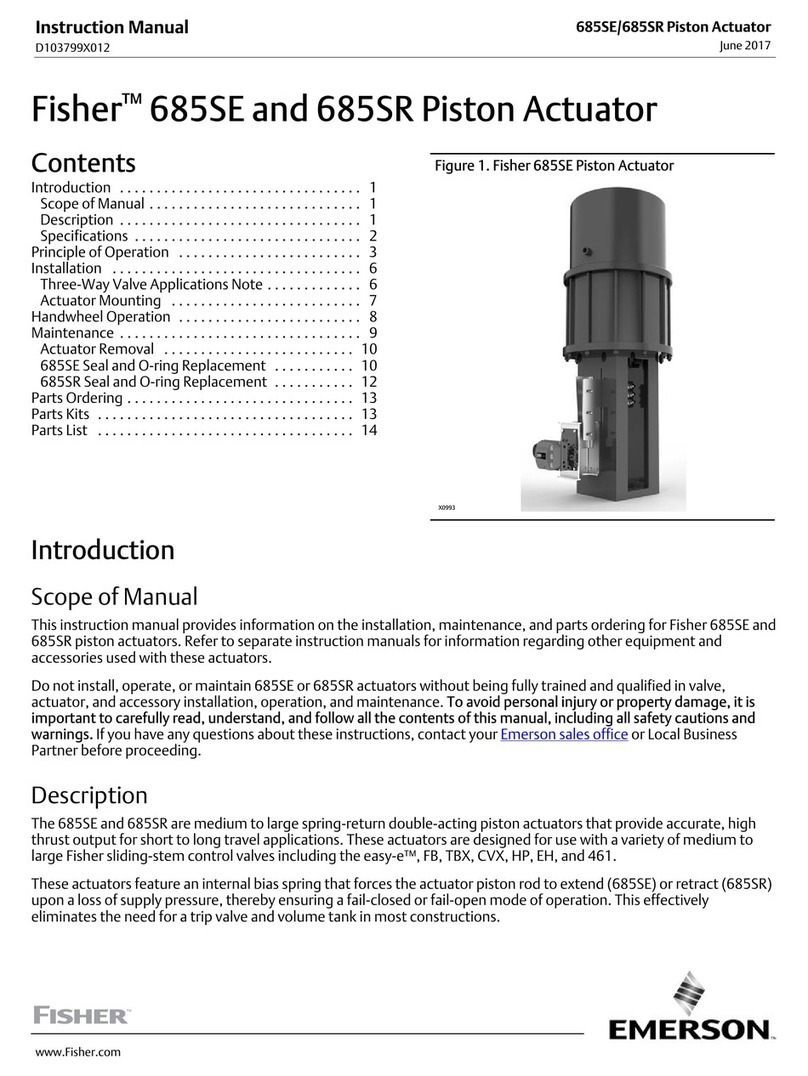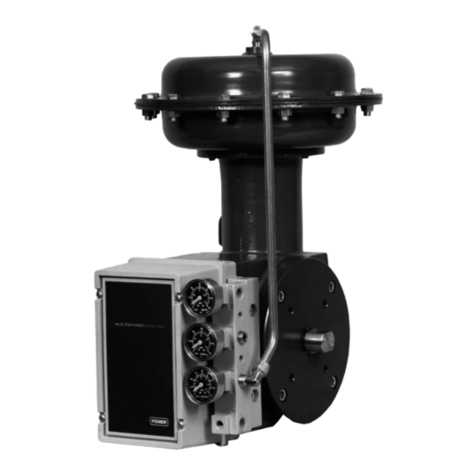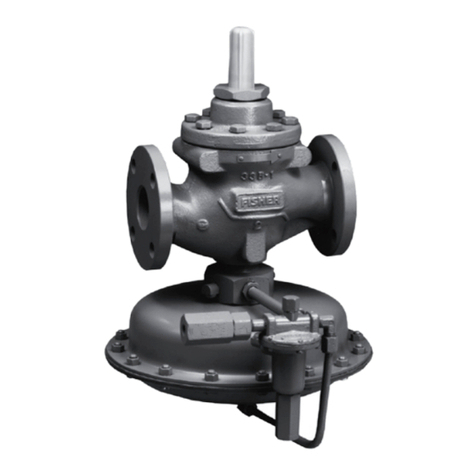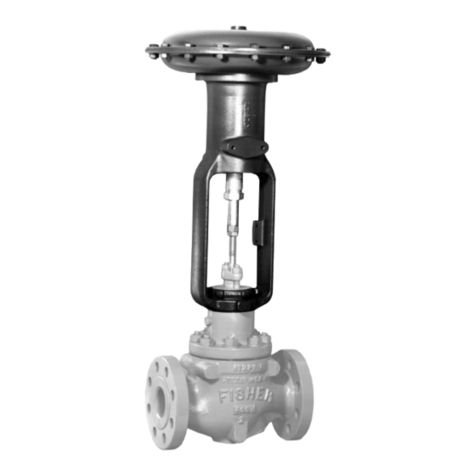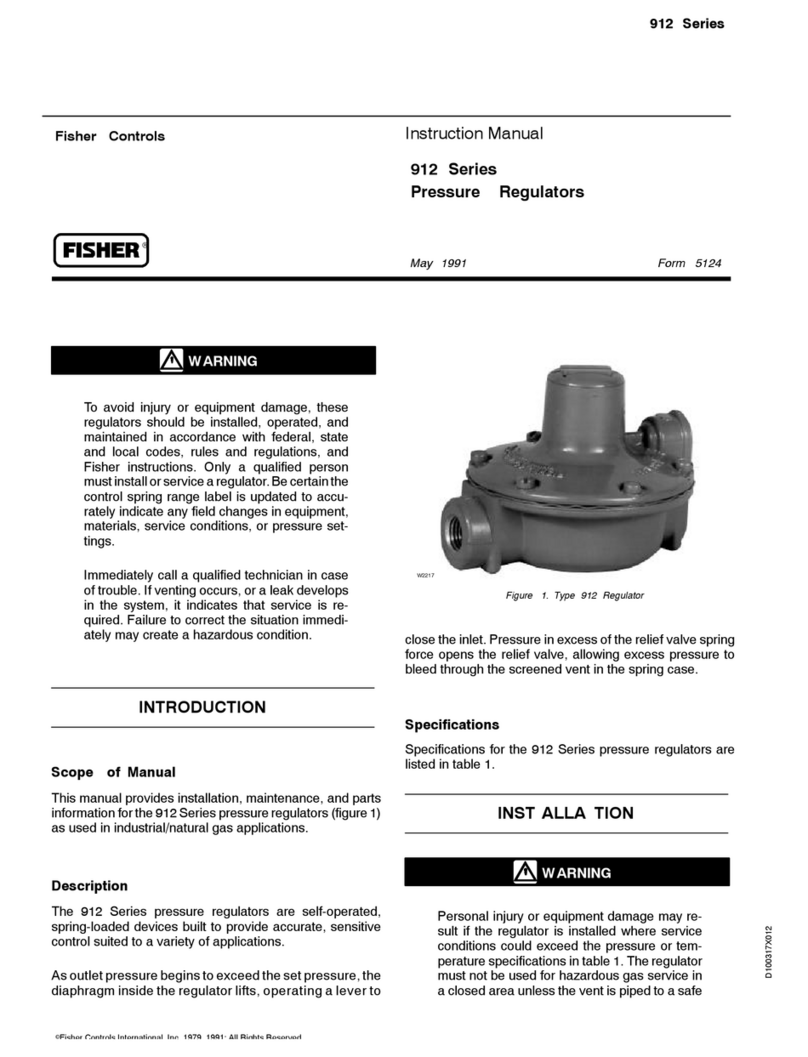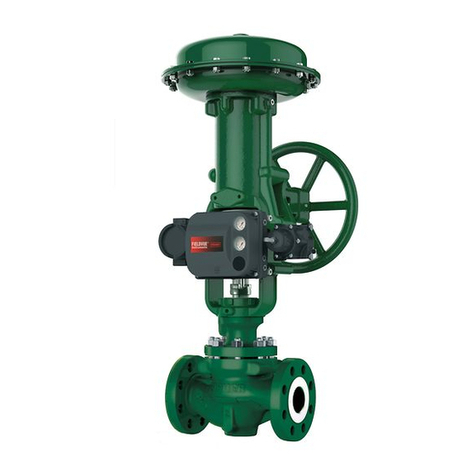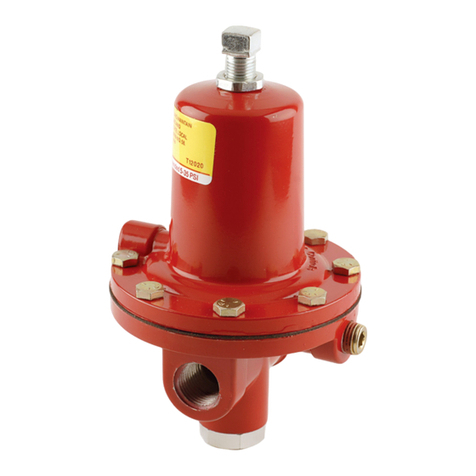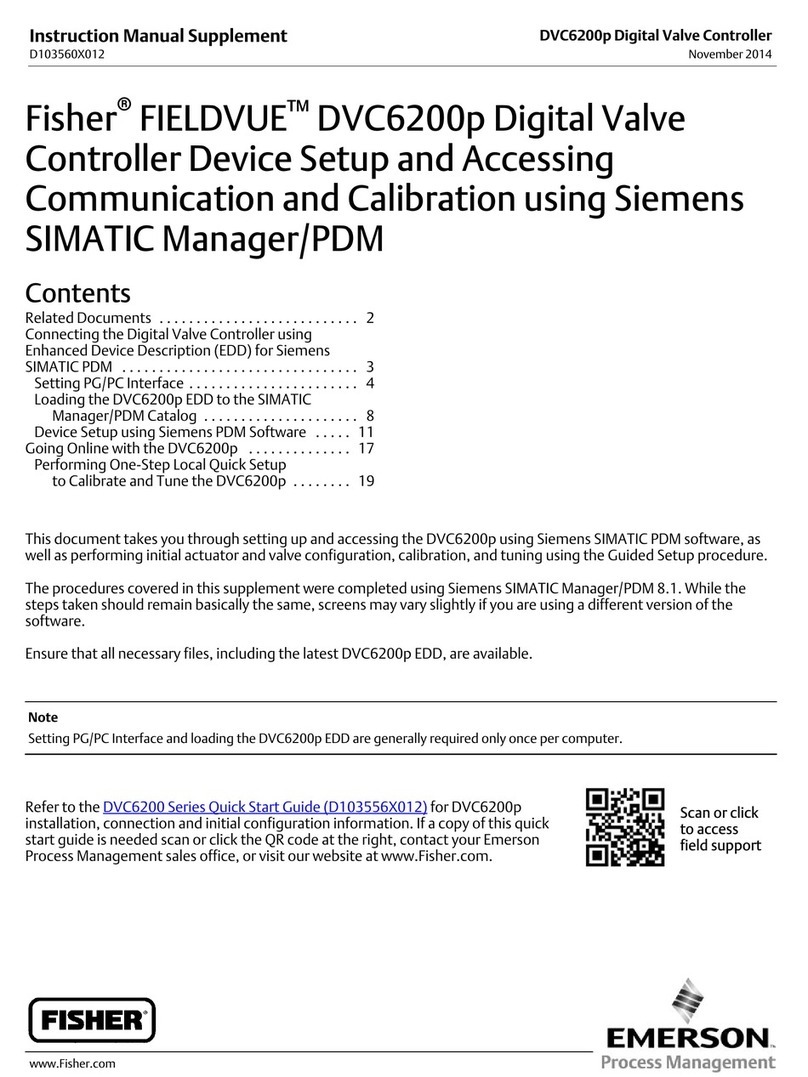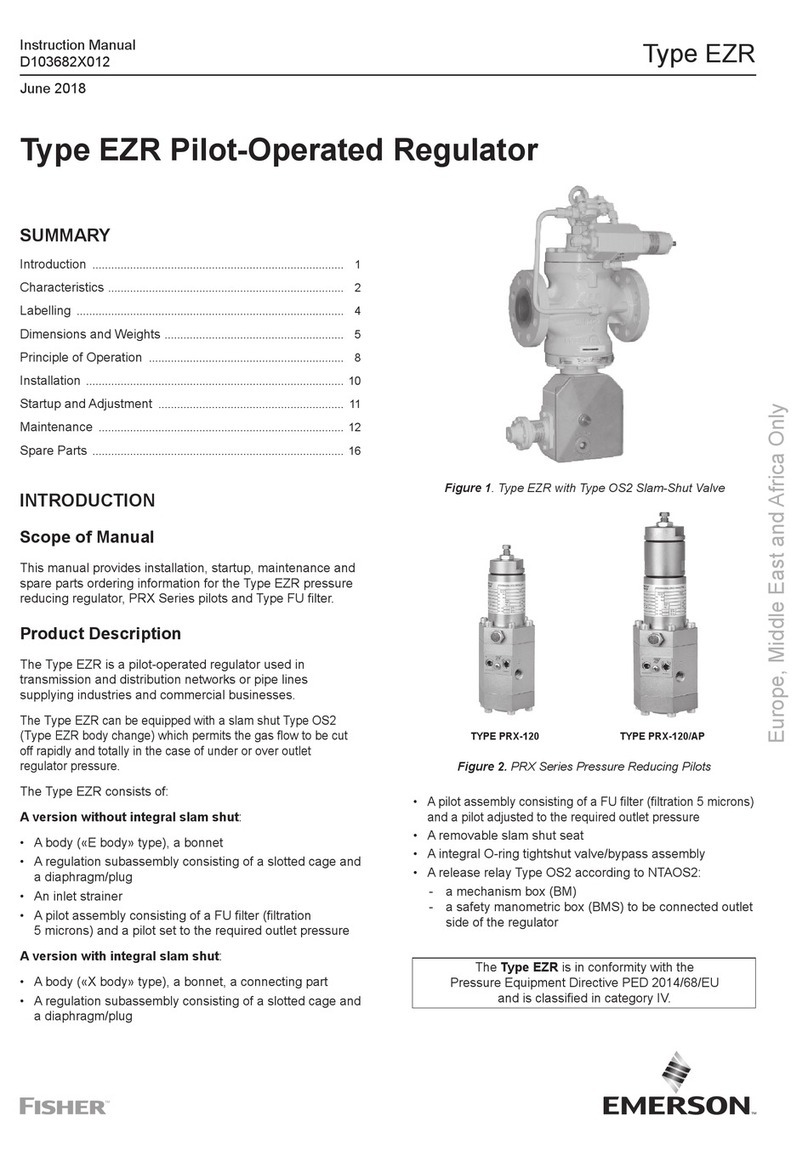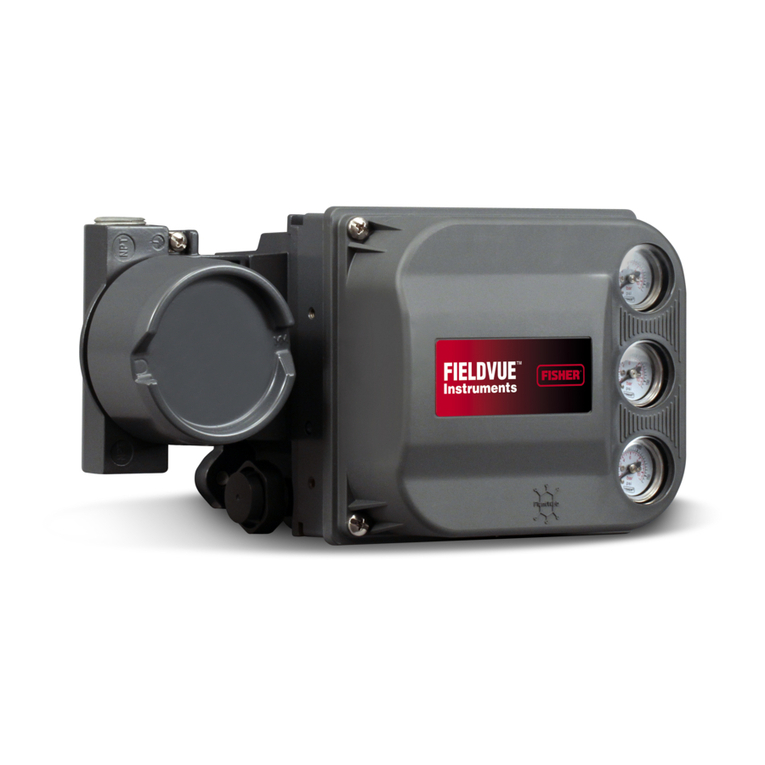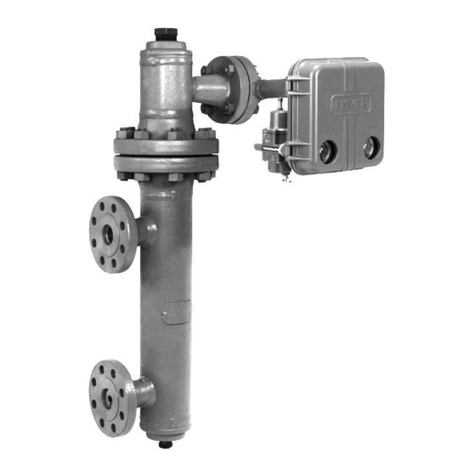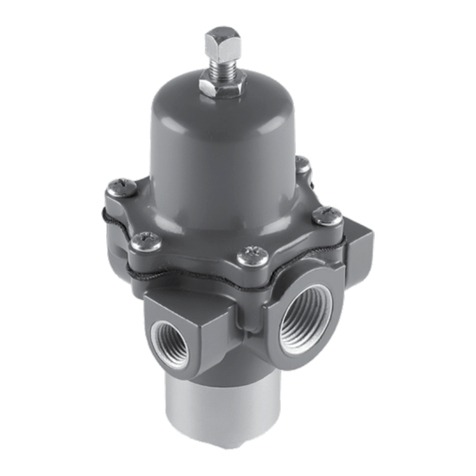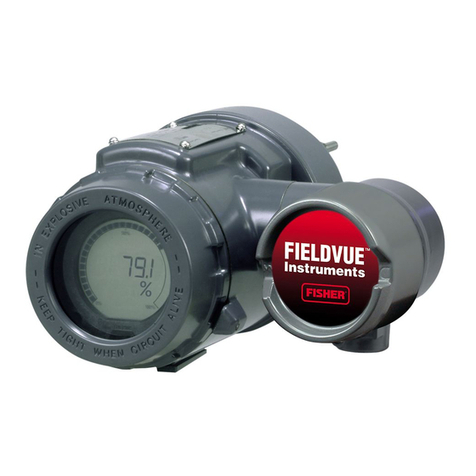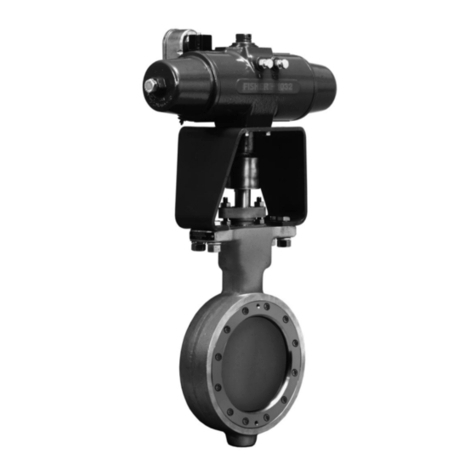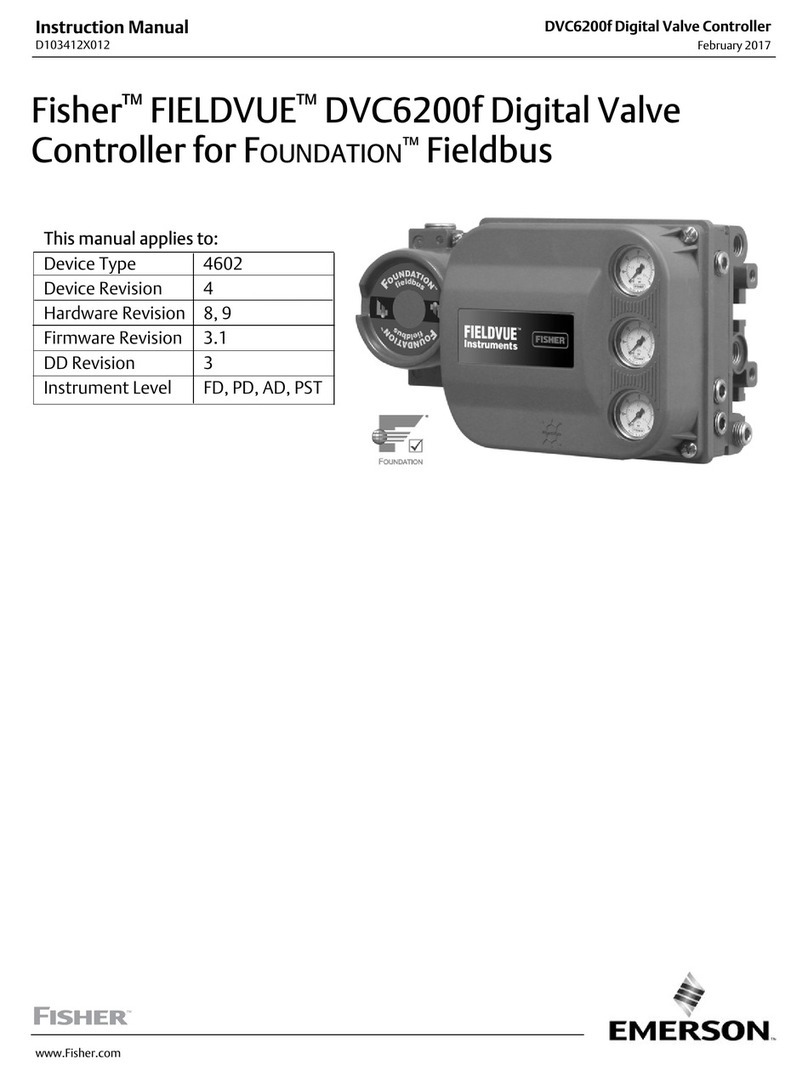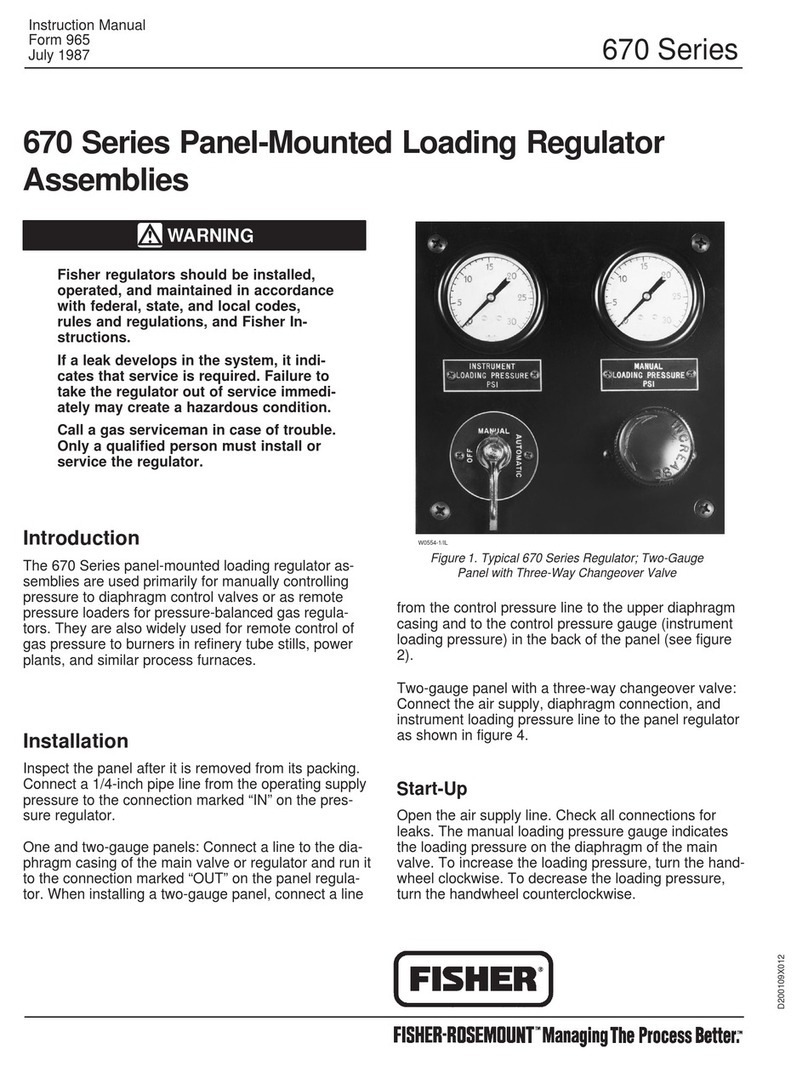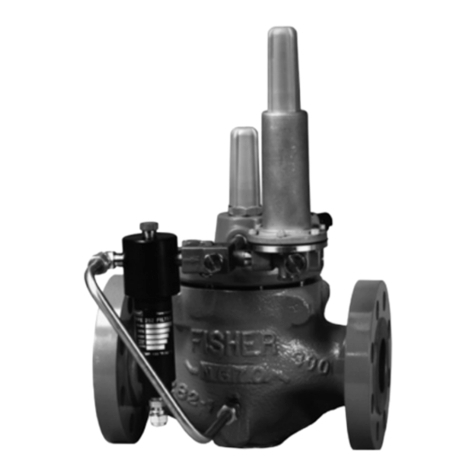
Instruction Manual Supplement
D104215X012
DLC3100 SIS Digital Level Controller
April 2018
9
7. Installation and Commissioning Guidelines
1. Verify that the DLC3100 SIS is suitable for use in Safety Instrumented Function
2. Verify nameplate markings are suitable for the hazardous location (if required)
3. Verify appropriate connections to the logic solver are made by referring to the instruction and safety manual of the
logic solver
4. For maximum availability and benefit of digital level controller features, the unit must be properly configured and
calibrated, the Instrument Mode set to In Service, and the protection enabled. With protection set, calibration and
other protected parameters cannot be changed, including Instrument Mode.
5. The sensor safety function of the DLC3100 SIS along with the SIS safety function must be tested after installation to
ensure that it meets safety demand and applicable process safety time requirements.
8. General Requirements
Refer to Fisher DLC3100 quick start guide and instruction manual for mounting to a 249 sensor, starting up, and
configuring and calibrating the DLC3100 SIS.
DLC3100 SIS digital level controllers shall be mounted so that they are easily accessible for service, configuration, and
monitoring. Exposure to corrosive atmosphere, excessive vibration, shock, or physical damage shall be prevented.
9. Operation, Periodic Inspection, Test, and Repair
Periodic testing, consisting of proof test, is an effective way to reduce the PFDavg of the DLC3100 SIS instrument as
well as the 249 sensors connected to it. The SIL for the DLC3100 SIS is based on the assumption that the end user will
carry out these tests and inspection at least once per year. The system check must be carried out to prove that the
safety functions meet the IEC specification and result in the desired response of the safety system as a whole. Results
of periodic inspections and tests should be recorded and reviewed periodically.
Maintenance
DThe effective time to restore the DLC3100 SIS is approximately 24 hours. This comprises of disassembly, repair,
reassembly, and recalibration.
DDigital level controller preventive maintenance consists, at a minimum, of replacing all critical elastomeric seals
and a visual inspection of moving components to verify satisfactory condition. The SIS Preventive Maintenance
Kit includes all elastomeric seals and is available through your local Emerson sales office. Following maintenance,
the digital level controller must be calibrated per the calibration menu. After calibration, the digital level
controller functional safety must be validated.
DA conservative approach is taken in estimating the service interval for the digital level controller in Safety
Instrumented Systems. For SIS applications, preventive maintenance must be performed on the digital level
controller at eight to ten year intervals from the date of shipment. If the instrument is exposed to the upper or
lower extremes of the environmental limits, the interval for preventive maintenance may need to be reduced.
Protection
When protection is enabled, setup and calibration of the DLC3100 SIS are not permitted by local user interface or by
remote HART communication. Only reading data is allowed. The LCD display will show a lock icon ( ) to indicate that
the DLC3100 SIS is currently protected.
